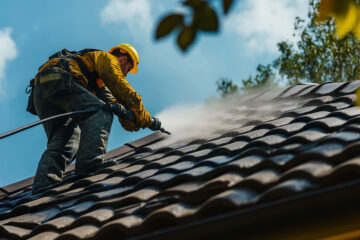Snow shoveling plays a crucial role in ensuring the safety and well-being of the general public during winter months. While it may seem like a mundane task, clearing snow from sidewalks, driveways, and roads has a significant impact on public health, safety, and mobility. Here’s why snow shoveling is so important:
1. Prevents Slips, Trips, and Falls
One of the primary reasons for shoveling snow is to reduce the risk of accidents, particularly slips, trips, and falls. Snow and ice accumulation on walkways, driveways, and public sidewalks can create hazardous conditions. People, especially the elderly or those with mobility challenges, are at a high risk of injury when walking on untreated snow or ice. By shoveling snow, these risks are minimized, making it safer for everyone to walk or drive in the area.
2. Ensures Safe Transportation
Snow buildup on roads and highways can cause significant disruptions to traffic flow, leading to accidents, traffic jams, and delays. Clearing snow from roads ensures that vehicles can travel safely, especially in emergency situations. Snow removal is crucial for maintaining access to essential services like healthcare, emergency response, and transportation of goods.
- Emergency Services: Snow accumulation can block access to homes or make it difficult for emergency vehicles to reach people in need. Shoveling snow from private driveways and public areas helps ensure that firefighters, paramedics, and other emergency services can get to their destinations without delay.
- Public Transportation: In areas with public transportation systems, snow removal is essential for maintaining bus and train schedules. Snow and ice can delay or cancel services, making it harder for people to get to work, school, or essential appointments.
3. Helps with Accessibility
For individuals with disabilities, snow and ice can create significant barriers to mobility. Snow shoveling helps create accessible pathways for people using wheelchairs, walkers, or other mobility aids. Accessible sidewalks and ramps are crucial for ensuring that everyone, regardless of their physical abilities, can move around safely and independently during winter weather.
4. Protects Property from Damage
Snow and ice accumulation can cause damage to property if left unattended. For example, the weight of heavy snow on roofs can lead to structural damage or leaks. Frozen pipes, which can burst when thawed, are also a concern. Shoveling snow around the home or building can prevent these types of damage and help preserve property value.
Additionally, shoveling snow from driveways and walkways prevents ice buildup that can damage surfaces, such as concrete or asphalt, over time.
5. Supports Community Well-being
Snow shoveling is not just about individual safety; it’s also a community responsibility. In many places, especially in residential neighborhoods, local ordinances require homeowners and property owners to clear snow from sidewalks in front of their homes or businesses. This fosters a sense of community care and ensures that everyone can safely navigate shared public spaces.
- Neighborhood Collaboration: In some communities, neighbors help each other shovel snow, especially for elderly or disabled residents who might have trouble doing it themselves. This kind of collective effort strengthens the social fabric of communities.
- Health Benefits: Snow shoveling is also a physical activity. While it should be done carefully to avoid strain or injury, it provides an opportunity for exercise, particularly in colder months when outdoor activities may otherwise be limited.
6. Maintains Aesthetic and Livability
Shoveling snow also helps maintain the overall appearance of streets and neighborhoods. Accumulated snow can make areas look neglected and unkempt, which can affect community pride. Additionally, in cities or towns that rely on tourism, snow-covered roads, and pathways can negatively impact the local economy if people are deterred from visiting due to hazardous conditions.
7. Reduces the Environmental Impact of Snow Melts
When snow and ice are left to melt naturally, it can lead to an increase in water runoff, which may contribute to flooding, particularly in areas with poor drainage. Additionally, the use of chemicals like road salt to melt snow can have harmful effects on local ecosystems, including plants, animals, and bodies of water. By shoveling snow before it turns to ice, fewer chemicals are needed, which helps protect the environment.
8. Fosters Public Health
Shoveling snow helps ensure that individuals can safely get to healthcare appointments, grocery stores, and other essential services. In winter, it’s especially important for people to be able to reach medical care without obstacles. Moreover, by removing snow early, it reduces the chances of ice forming, which can lead to injuries and accidents that may require medical attention.
Conclusion
Snow shoveling is an essential task that impacts public health, safety, and mobility. Whether it’s preventing slips and falls, ensuring safe transportation, or maintaining accessibility for all, clearing snow helps create a safer, more functional environment for everyone. Beyond personal and property safety, snow removal fosters a sense of community and environmental responsibility. It’s a vital task that supports public well-being during the winter months, benefiting individuals, families, neighborhoods, and society as a whole.
